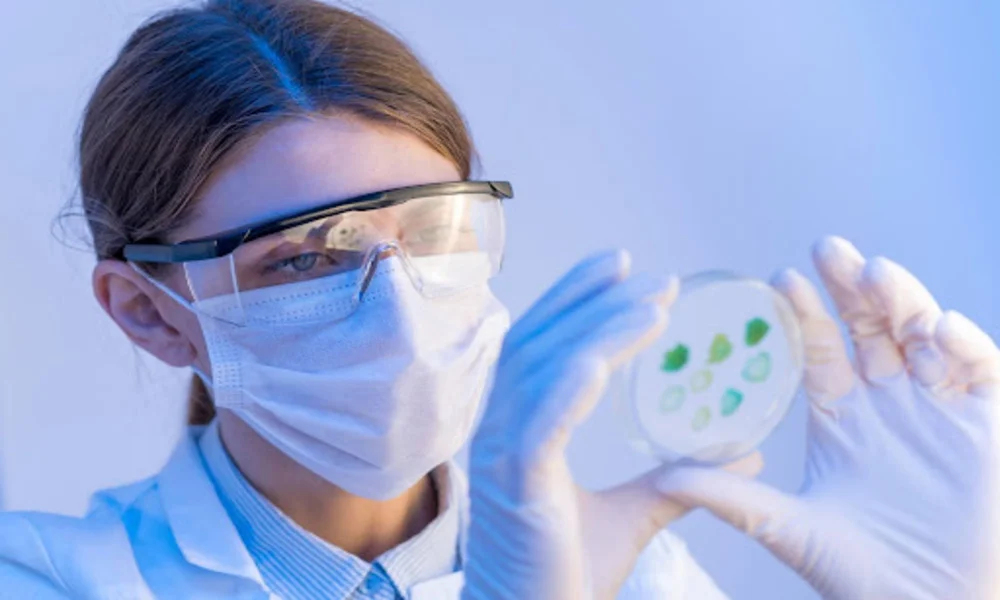The expression of recombinant proteins using bacterial animal and plant vectors has become a cornerstone of biotechnology, allowing for the production of proteins with therapeutic, industrial, and research applications.
This blog explores the methods and principles behind the expression of recombinant proteins using bacterial animal and plant vectors.
Introduction to Recombinant Protein Expression
Recombinant protein expression involves inserting a gene encoding the desired protein into a host organism, which then uses its cellular machinery to produce the protein. The choice of the host system, bacterial, animal, or plant, depends on various factors which includes the protein’s complexity, the required yield, and post-translational modifications. Understanding the nuances of each system is essential for optimizing protein production.
Expression of Recombinant Proteins Using Bacterial Vectors
Bacterial Expression Systems
Bacterial expression systems, particularly Escherichia coli (E. coli), are widely used for producing recombinant proteins due to their simplicity, rapid growth, and high yield.
1. Gene Cloning
The gene of interest is cloned into a plasmid vector, which is a circular DNA molecule that replicate independently within bacterial cells. Plasmids used in bacterial expression systems often contain a strong promoter, such as the T7 promoter, to drive high levels of transcription.
2. Transformation
The recombinant plasmid is introduced into competent E. coli cells through a process called transformation. This be achieved by chemical methods (e.g., calcium chloride treatment) or electroporation.
3. Protein Expression
Inducing agents like isopropyl β-D-1-thiogalactopyranoside (IPTG) are used to activate the promoter and initiate transcription of the recombinant gene. The bacterial cells then translate the mRNA into the desired protein.
4. Protein Purification
Recombinant proteins are often tagged with affinity tags (e.g., His-tag, GST-tag) to facilitate purification. Techniques such as affinity chromatography are used to isolate the protein from bacterial lysates.
Advantages and Limitations
Advantages
- High yield of protein production.
- Low cost and simple culture conditions.
- Rapid growth and easy genetic manipulation.
Limitations
- Limited capacity for post-translational modifications.
- Formation of inclusion bodies (insoluble protein aggregates) occur, requiring solubilization and refolding.
Expression of Recombinant Proteins Using Animal Vectors
Mammalian Expression Systems
Mammalian cells, such as Chinese hamster ovary (CHO) cells and human embryonic kidney (HEK) cells, are preferred for expressing proteins that require complex post-translational modifications, such as glycosylation. The process involves:
1. Gene Cloning
The gene of interest is inserted into a mammalian expression vector, which typically includes elements like a mammalian promoter (e.g., CMV promoter), enhancer sequences, and selection markers.
2. Transfection
The recombinant plasmid is introduced into mammalian cells using methods like lipofection, electroporation, or viral transduction.
3. Protein Expression
Stable or transient expression systems be used. In stable expression, the plasmid integrates into the host genome, allowing long-term protein production. In transient expression, the plasmid remains episomal, resulting in short-term, high-level expression.
4. Protein Purification
Similar to bacterial systems, affinity tags are used for protein purification. Additional steps may be necessary to ensure proper folding and modification of the protein.
Advantages and Limitations
Advantages
- Ability to perform complex post-translational modifications.
- Suitable for producing therapeutic proteins and antibodies.
Limitations
- Higher cost and more complex culture conditions.
- Slower growth rate compared to bacterial systems.
Expression of Recombinant Proteins Using Plant Vectors
Plant Expression Systems
Plants offer an alternative expression system for recombinant proteins, combining aspects of both bacterial and mammalian systems. Techniques include transient expression and stable transformation:
1. Gene Cloning
The gene of interest is cloned into a plant expression vector, often containing a strong plant promoter (e.g., CaMV 35S promoter) and other regulatory elements.
2. Transformation
The recombinant plasmid is introduced into plant cells using methods like Agrobacterium-mediated transformation or biolistic particle delivery (gene gun).
3. Protein Expression
Transient expression systems, such as agroinfiltration, allow for rapid, short-term protein production. Stable transformation involves integrating the gene into the plant genome, enabling long-term expression.
4. Protein Purification
Recombinant proteins are extracted from plant tissues and purified using affinity chromatography or other methods.
Advantages and Limitations
Advantages
- Low cost of production and scalability.
- Capability for post-translational modifications.
- Reduced risk of contamination with human pathogens.
Limitations
- Variable expression levels depend on the plant species and tissue.
- Potential for proteolytic degradation and variability in glycosylation patterns.
Comparative Analysis of Expression Systems
When choosing an expression system, several factors need to be considered:
1. Protein Complexity
Simple proteins be efficiently produced in bacterial systems, while complex proteins requiring specific modifications may necessitate mammalian or plant systems.
2. Yield and Scalability
Bacterial systems offer high yield and scalability for industrial applications. Plant systems also provide scalability with lower production costs.
3. Post-Translational Modifications
Mammalian cells are best suited for proteins requiring human-like modifications, whereas plant systems offer similar benefits with some limitations.
4. Cost and Time
Bacterial systems are cost-effective and rapid, while mammalian systems are more expensive and time-consuming. Plant systems offer a balance with lower costs but may require optimization for high-yield production.
Future Directions and Innovations
The field of recombinant protein expression is continuously evolving, with advancements aimed at improving efficiency, yield, and quality:
1. Synthetic Biology
Designing synthetic promoters, enhancers, and regulatory elements to optimize gene expression in various host systems.
2. CRISPR/Cas9
Utilizing genome editing technologies to enhance the stability and efficiency of recombinant protein production.
3. Chimeric Hosts
Engineering hybrid host systems that combine the benefits of bacterial, mammalian, and plant systems for tailored protein production.
4. Bioprocess Optimization
Developing advanced bioreactor designs and culture conditions to maximize protein yield and quality.
Conclusion
The recombinant proteins expression of recombinant proteins using bacterial animal and plant vectors is a versatile and powerful approach in biotechnology. Each system offers unique advantages and limitations, making the choice of host dependent on the specific requirements of the protein of interest. As technologies advance, the efficiency and capability of these systems continue to improve, opening new avenues for producing high-quality recombinant proteins for diverse applications in medicine, industry, and research.
GeNext Genomics excels in leveraging recombinant protein expression of recombinant proteins using bacterial animal and plant vectors, ensuring high-quality production tailored to your needs. With cutting-edge technology and expert knowledge, GeNext Genomics delivers precise and efficient solutions for research and therapeutic applications. Trust GeNext Genomics to drive innovation and provide exceptional service in the realm of biotechnology and protein production.
Also read:- Introduction To Recombinant Proteins & Its Applications



